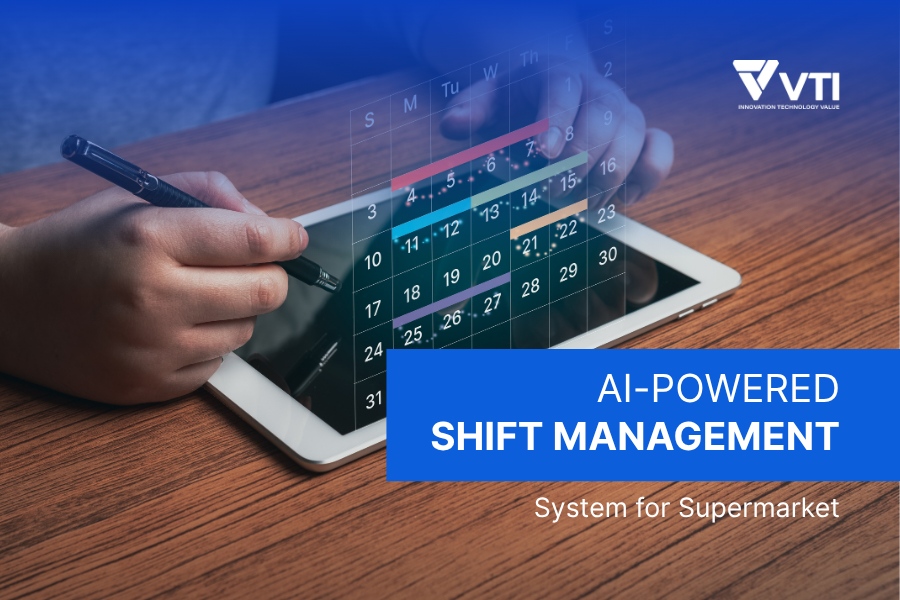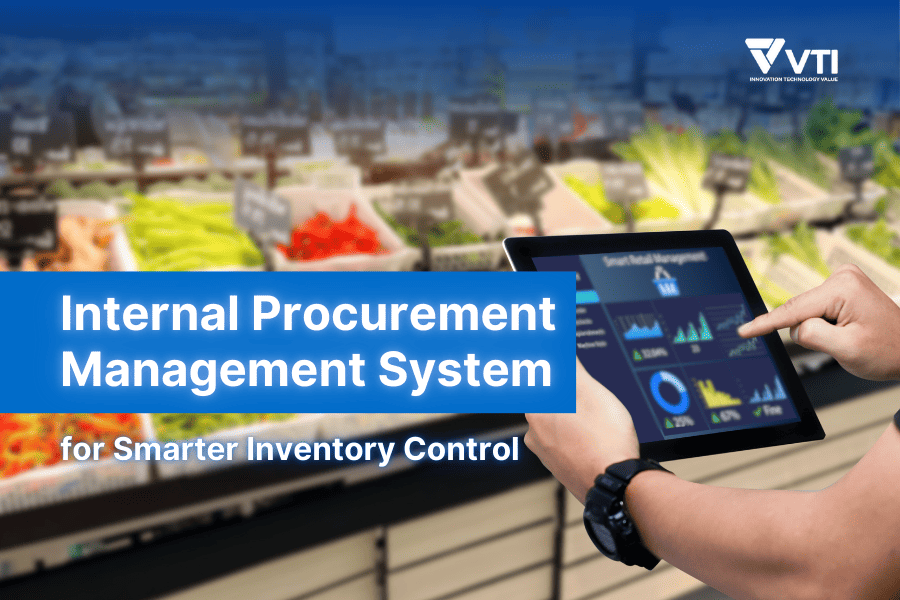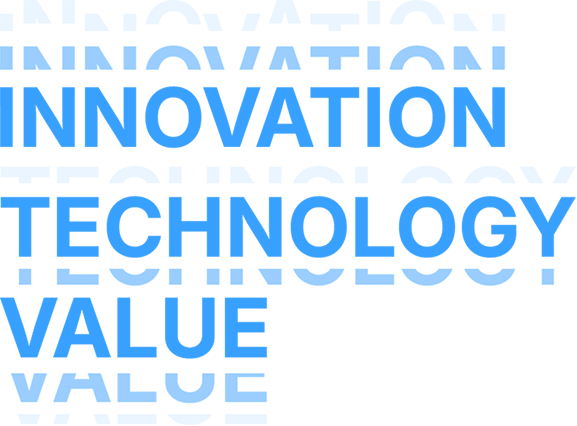Our customer has been working on creating universal technology, services, and business models as a market leader for AI, IoT, and Big Data Platforms. This project aims to develop a Mobile Device Management (MDM) system to support the customer’s partner companies in managing their employees’ devices. With a large scale, including 500 partner companies, each with approximately 1,000 employees, the system needs to manage around 500,000 devices efficiently. Using Ruby on Rails and Agile-Scrum, VTI has managed to provide the customer with a faster backend development.
The system requires a website for IT Admins, allowing them to manage device settings such as camera, microphone, applications, and other configurations. The project also involves integration with Google’s API (Application Programming Interface) to enable remote device management operations.
Challenges Encountered During Implementation Process
The large scale of the system and reliance on third-party APIs (Google) posed several challenges for VTI delivery team:
- High volume of requests during data synchronization: Load testing was conducted, and issues were thoroughly investigated to ensure data sync reliability.
- Dependency on Google’s API: Continuous testing helped detect issues early, allowing them to be promptly reported to Google.
- Frequent changes in Google’s policies: Policies were actively monitored and updated to ensure compliance and prevent disruptions.
- Load testing under high concurrent request volumes: Scalable test servers and scripts were set up to handle many simultaneous requests effectively.
VTI’s Technical Strategic and Team Organization
VTI divided the delivery team into two: the FMD (Fully Managed Device) Functions Team and the DD (Dedicated-Device) Functions Team. This division was based on the system’s two primary functional flows, with each team taking on specific responsibilities as follows:
Team 1: FMD (Fully Managed Device) Functions
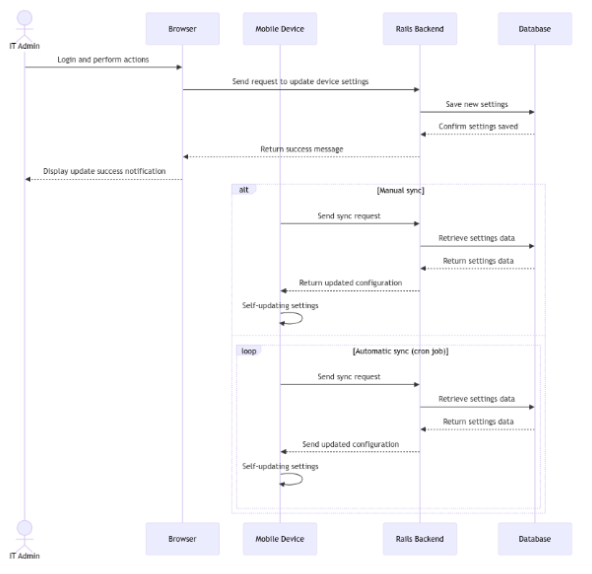
- Backend: Designed the database, created APIs for mobile, and developed APIs for the frontend.
- Frontend: Built user interfaces and screens.
- Mobile (Android): Received settings via API and applied them to devices through the management app.
Team 2: DD (Dedicated-device) Functions
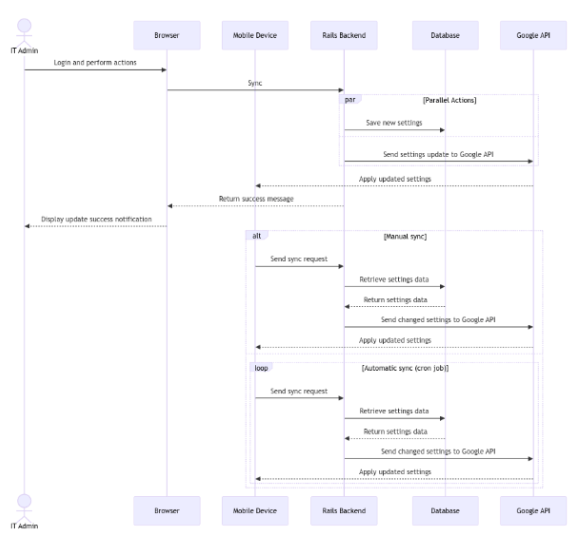
- Backend: Designed the database, developed APIs for the frontend, and integrated with Google APIs to apply settings.
- Frontend: Built user interfaces and screens.
- Mobile: No development was required, as device management was entirely handled through Google.
Reducing Development Time by 50% with Ruby and Ruby on Rails
The project leveraged modern technologies to ensure efficient development and stable system operation:
- Backend: Ruby on Rails (RoR) was chosen for its rapid and efficient development capabilities. With its philosophy of “Convention Over Configuration” and a rich ecosystem of gems, RoR reduced development time by 50% compared to other frameworks.
- Database: MySQL, Redis, MongoDB.
- Frontend: HAML and CSS
- Mobile (Android): Java.
Project Scale
- Team size: 16
- BrSE
- Dev (backend, frontend, mobile)
- Tester
- Duration: 01/2022 – 06/2023
- Outsourcing Model: Offshore – Onshore
- Methodology: Agile -Scrum
How VTI Apply Agile-Scrum Methodology in the Project
The Agile-Scrum methodology was consistently applied throughout the project, with each sprint lasting about two weeks.
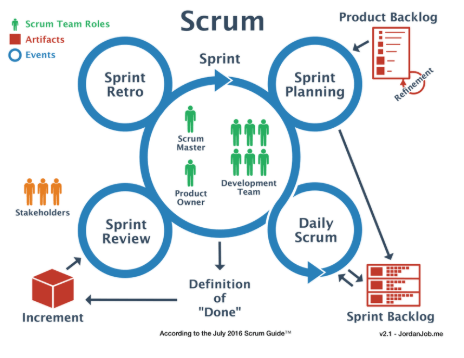
- Planning: The customer provides a list of required features for each sprint, followed by the team’s analysis of the requirements, database design, and task allocation.
- Daily Scrum: Daily meetings allowed team members to share updates, resolve issues, and align on priorities, helping to mitigate risks and increase transparency within the team.
- Review: Sessions were held at the end of each sprint to assess completed tasks, with each feature tested individually before integration into the overall system, ensuring everything functioned as expected.
- Retro: An opportunity to reflect on successes and challenges, with insights shared on improving processes for future sprints and ensuring continuous improvement.
Achieving Success with Ruby on Rails and Agile-Scrum at VTI
VTI has harnessed the power of Ruby and Ruby on Rails alongside the adaptable Agile-Scrum methodology to drive both speed and efficiency in implementation process. The combination reduced development time by 50%, allowing the team to stay proactive while consistently delivering a high-quality product.
If you’re ready to take your project to the next level, get in touch with us today. Let’s turn your ideas into reality, faster, smarter, and more efficiently than ever before!
![[FREE EBOOK] Strategic Vietnam IT Outsourcing: Optimizing Cost and Workforce Efficiency](https://vti.com.vn/wp-content/uploads/2023/08/cover-mockup_ebook-it-outsourcing-20230331111004-ynxdn-1.png)


